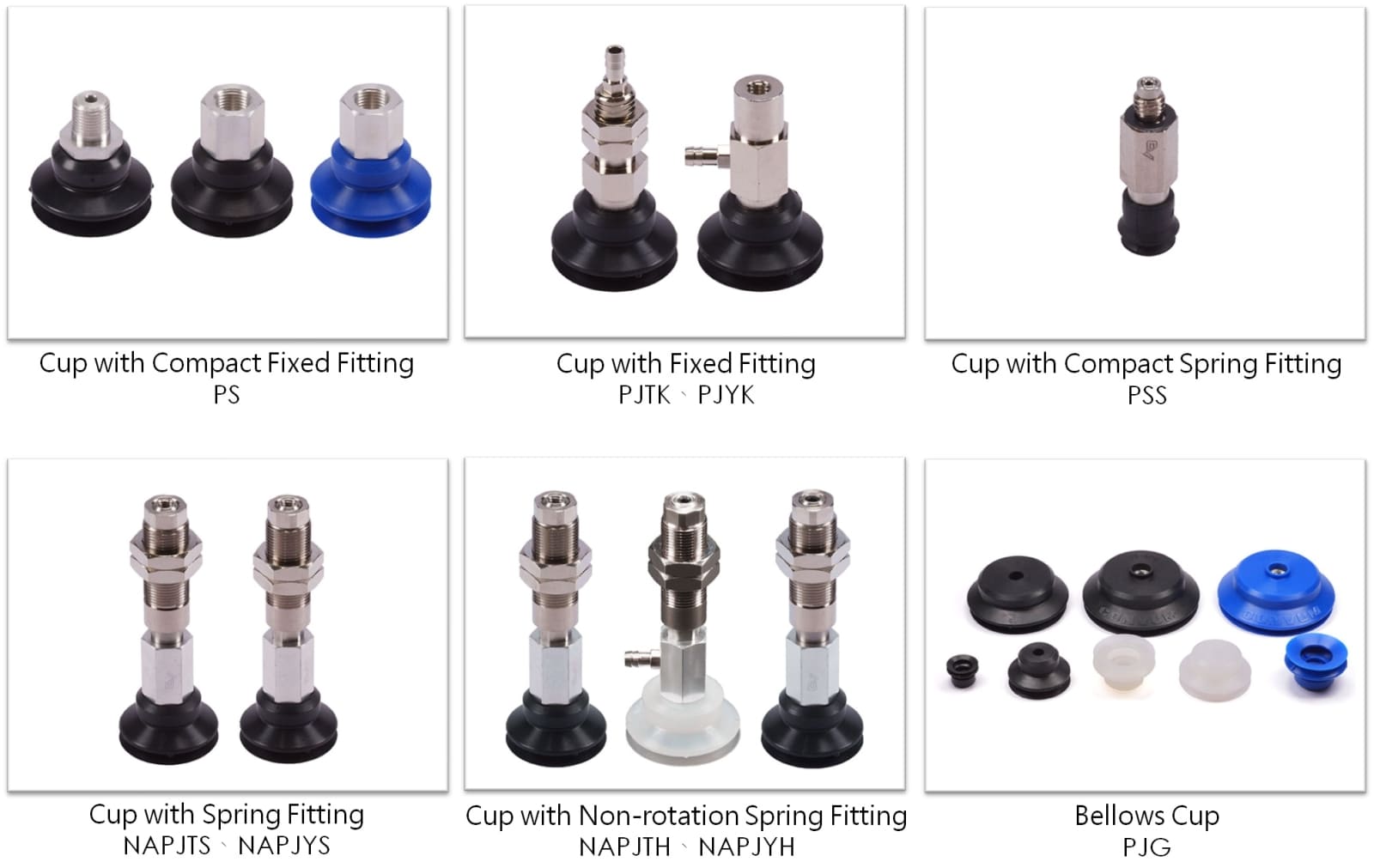

- All Products
- Pneumatic Series
- GENTLE Pneumatic Fittings
- GENTLE Ionizer
- CONVUM Ltd.
- FUJIKURA
- FUJI LATEX Co., Ltd.
- KOGANEI Corporation
- iB series
- Air Cylinders, Hands
- Air Valves
- Air Filters, Regulators, Pressure Gauges
- Flow Rate Sensor Switches, Plachain Ducts, Pressure Switches
- Vacuum Equipment, Pads
- Electric Actuator
- Environmental Hygiene Equipment
- Static Electricity Removal
- Fluororesin Products
- Fixed Discharge Pump
- Medium Control Equipment
- Pulse Blow Series
- NKE Corporation
- TAKEX
- Dispensing Series
- Thin Dual-Bellows: Low-profile cup with high compliance for impact absorption and stroke compensation on inclined/stepped surfaces.
- Built for Tight Spaces: Short overall height suits EOATs that cannot accommodate mechanical shock absorbers.
- Wide Size Range: ø4, 6, 8, 10, 15, 20, 25, 30, 35, 40, 50, 60, 70, 80 mm covering small to mid-size parts.
- Material Options (by model):
- N (NBR): general duty, oil resistant.
- S (Silicone): softer, minimizes marking—good for appearance-critical/clean processes.
- U (Polyurethane): wear resistant, fast rebound for high throughput.
- F (FKM): high temperature and chemical resistance.
- NE (Conductive NBR) / SE (Conductive Silicone): conductive grades for ESD control.
- Stable Holding: Fast lip sealing plus bellows travel reduce drops and slippage on lightly uneven or angled faces.
- Applications: Inclined/slightly uneven surfaces, electronics and packaging transfer, tight-space pick modules, lightweight part handling in high-speed automation.

Q1: How is PJ different from PB (standard dual bellows)?
A: PJ is thin-profile for inclined surfaces and tight spaces; PB offers larger travel/cushioning for more uneven surfaces.
Q2: What types of parts does PJ handle best?
A: Lightweight, inclined, or mildly irregular small-to-medium parts—packaging items, cosmetic housings, electronic components.
Q3: Is PJ suitable for high-speed automation?
A: Yes. Use appropriate vacuum generator/orifice settings and motion profiles; size the pad based on on-tool test results.
Q4: What size options are available?
A: ø4–80 mm (14 common sizes) to match contact area, load, and station constraints.
Q5: How should I choose materials (N/S/U/F/NE/SE)?
A: N general/oil-resistant; S softer, minimizes marking; U wear-resistant/quick rebound; F heat/chemical-resistant; NE/SE conductive for ESD applications. Select by workpiece, environment, and process needs.







